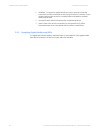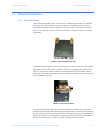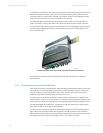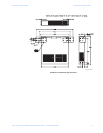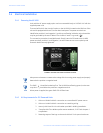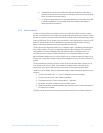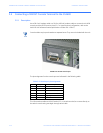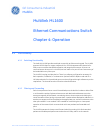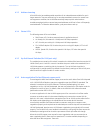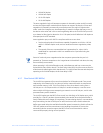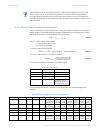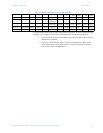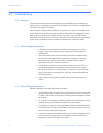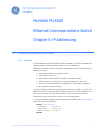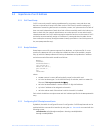4–2 MULTILINK ML1600 ETHERNET COMMUNICATIONS SWITCH – INSTRUCTION MANUAL
FUNCTIONALITY CHAPTER 4: OPERATION
4.1.3 Address Learning
All ML1600 units have address table capacities of 4K node addresses suitable for use in
larger networks. They are self-learning, so as nodes are added, removed or moved from
one segment to another, the ML1600 automatically keeps up with node locations.
An address-aging algorithm causes least-used addresses to fall out in favor of frequently-
used addresses. To reset the address buffer, cycle power down-and-up.
4.1.4 Status LEDs
The following status LEDs are included:
• PWR: Power LED, ON when external power is applied to the unit.
• LK: Steady ON, link status for 10 Mbps and 100 Mbps operation.
• ACT: ON with port activity for 10 Mbps and 100 Mbps operation.
• F/H: Full/half-duplex LED, ON when the port is running full-duplex, OFF for half-
duplex.
• 100/10: Speed LED, ON when the speed is 100 Mbps, OFF when the speed is
10 Mbps.
4.1.5 Up-link Manual Switches (for RJ45 port only)
The module has a manual up-link switch, located on the inside of the board next to the 10/
100Mb (RJ45) port # 1 which it controls. It enables the port's cable to be cascaded (X) to a
10/100Mb repeater or switching hub in the network. The Up-link Switch position is
configured as (=) straight position by default from the factory settings on all the RJ45 ports,
either used for all copper module or combo module.
4.1.6 Auto-negotiation (for fast Ethernet copper ports)
The managed ML1600 Fast Ethernet copper ports can be set for either fixed 100 Mb speed
or for 10/100 full/half-duplex n-way auto-negotiation per the IEEE802.3u standard. The
selection is made via the ML1600 software. The factory default setting is for auto-
negotiation. At 10 or 100 Mb fixed speed, the user may select half or full-duplex mode via
software for each RJ45 port. For details, refer to the MultiLink MNS software manual
(publication number GEK-113043).
A common application for the ML1600 copper ports is for connection via a fiber media
converter to another switch in the network backbone (or some other remote 100 Mb
device). In this case, it is desirable to operate the fiber link at 100 Mb, and at either half or
full-duplex mode depending on the capabilities of the remote device. Standard
commercially available Fast Ethernet media converters mostly do not support auto-
negotiation properly, and require that the switched port to which they are connected be at
100 Mb fixed speed. Attachment to 10/100 auto-negotiation ports typically will not work
properly. The ML1600 RJ45 ports handle this situation by configuring the ports as per the
software port settings and can check the port status of each port after the change.
When the ML1600 copper ports are set for auto-negotiation and are connected to an
auto-negotiating device, there are four speed and F/H modes available, depending on
what the other device supports. These are:



